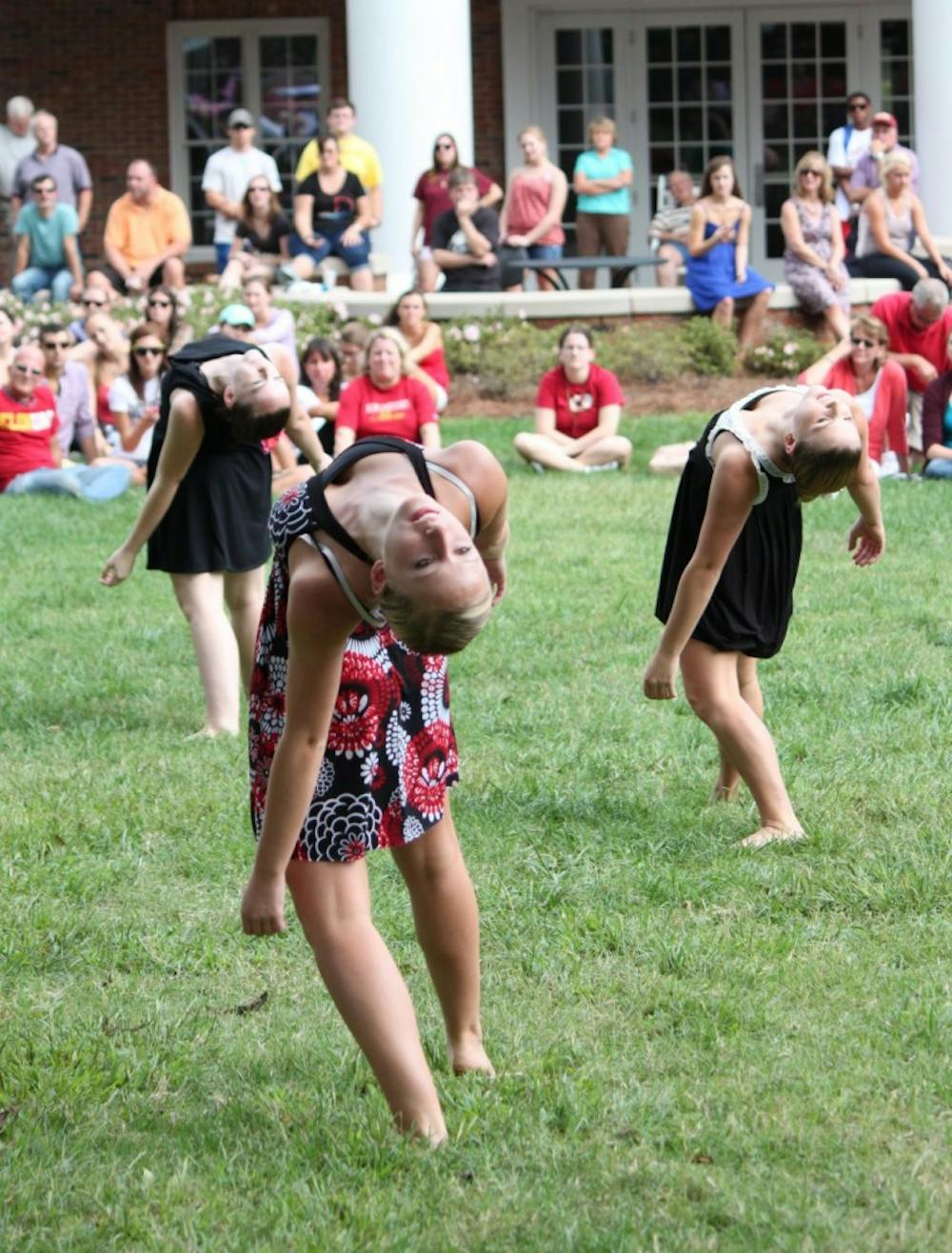A large crowd gathered around the Academic Village, as a group of dancers made their way through the grass, trees and pathways that comprise Elon University's campus on Sunday, Sept. 25.
"Dance in the Landscape," a site-specific dance concert that took place entirely outdoors, explored how dance and the natural world interact with one another to create choreography that can not be replicated in a traditional dance studio.
"It feels more natural to move around the surroundings of the trees, leaves, grass and the buildings," said Jason Aryeh, assistant professor of performing arts and artistic director of the concert. "The audience is very close to the dancers as compared to the proscenium stage. This freely establishes an audience-performer relationship which the dancer learns to connect by pulling the audience's focus to their world."
The interaction between the dancers and the audience members was nonstop. The show deviated from the norm of having audience members sit back to leisurely enjoy the performance by having many members of the audience physically moving out of the dancers' way as they ran, leaped, stepped over and slid through the terrain of the Academic Village.
"Dance in the Landscape" consisted of two pieces, one of which had four components to it. Both pieces explored the theme "Land of Our Birth."
"This idea involves how related dance moves into nature, or blends into our own environment," Aryeh said.
The performers were able to use all structures in the Village, from the grass to the trees to the amphitheatre.
"My dancers and I generated movement inspired by the site and received spatial direction from the various structures at Lindner Pavilion," said Jen Guy Metcalf, adjunct professor of dance and one of the choreographers. "The dancers found such creative ways to use trees, sidewalks, steps, lamp posts, grass and even pine needles in the choreography."
Metcalf's piece, titled "The Travelers," explored railroads and the concept of people traveling. It illustrated the relationship between the railroad and the local area that inspired her choreography.
"I did a little research on the area and read that Burlington was a community born of the railroad," she said. "I liked the idea of people traveling via the railroad, so I wanted to create a dance that traveled from one location to another on a clear path or track."
Although site-specific pieces present challenges that rarely occur within a studio or stage, such as the weather, both Aryeh and Metcalf said the experience is well worth it.
"The dancers get the opportunity to feed their strength, emotions and focus from the audience," Aryeh said. "Nature takes its place in the silence or music and relates to the performer as he or she draws inspiration."
Aryeh's piece, constructed in four parts, was choreographed centrally around the amphitheatre in front of Lindner Hall. He used famous pieces, such as Louis Armstong's "What a Wonderful World" and "King of Pride Rock" from Disney's "The Lion King," as well as instrumental music and silence through all the parts.
Rehearsing for "Dance in the Landscape" was difficult for the dancers.
"Different challenges appear with each site, but this one posed a challenge that was out of our control," Metcalf said. "There were a few days that we could not have rehearsal outdoors because of the rain. At our dress rehearsal, the dancers had to perform in some puddles and in soggy grass."
Despite the gloomy weather during the days prior to the concert, the sky was clear and sunny the day of the concert.
While site-specific concerts are not frequent at Elon, both Aryeh and Metcalf emphasized the enjoyment of the process.
"It is exciting to teach new students about site-specific work and to watch the upperclassmen continue to develop their creativity when choreographing for the landscape," Metcalf said. "I love creating site-specific dance because of the countless possibilities."


